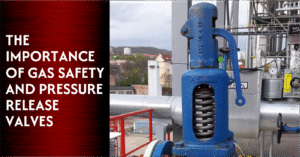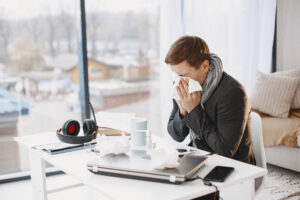Sick Building Syndrome (SBS) is a condition in which occupants of a building experience health effects and discomfort that appear to be linked directly to the time spent in the building. However, no specific illness or cause can be identified. Symptoms often improve or disappear when the affected person leaves the building. Common symptoms include headaches, dizziness, nausea, eye, nose or throat irritation, dry or itchy skin, difficulty in concentrating, fatigue, and sensitivity to odours.
Causes of Sick Building Syndrome
Inadequate Ventilation
Poorly designed or maintained HVAC systems can lead to insufficient outdoor air exchange.
Chemical Contaminants
Emissions from building materials, furnishings, cleaning agents, pesticides, and office equipment.
Biological Contaminants
Bacteria, moulds, pollen, and viruses that can proliferate in humidifiers, drain pans, and ducts.
Physical Factors
Poor lighting, excessive noise, and improper humidity levels.
Curing and Preventing Sick Building Syndrome
Improve Ventilation
- Ensure that HVAC systems are properly designed, installed, and maintained.
- Increase the intake of outdoor air to dilute indoor contaminants.
- Use air purifiers with HEPA filters to reduce airborne particles.
Control Indoor Pollutants
- Choose low-emission building materials and furnishings.
- Implement green cleaning practices using non-toxic products.
- Ensure proper storage and use of chemicals and pesticides.
Maintain HVAC Systems
- Regularly clean and maintain HVAC systems to prevent the growth of biological contaminants.
- Change filters regularly to ensure efficient operation.
Monitor and Control Humidity Levels
- Maintain indoor humidity levels between 30-50% to prevent mould growth and reduce dust mite populations.
- Use dehumidifiers in damp areas and humidifiers in overly dry areas.
Enhance Lighting
- Ensure adequate and proper lighting, reducing glare and ensuring that lighting levels are suitable for tasks performed in the space.
- Utilise natural light where possible and install lighting that mimics natural daylight.
- Use lights that are designed to remove contamination (you can see a case study of how we helped the junior team of Sampdoria FC do that here).
Implement Regular Building Maintenance
- Conduct regular inspections and maintenance of the building infrastructure to identify and address potential issues promptly.
- Ensure that water damage is promptly and thoroughly addressed to prevent mould growth.
Educate Occupants
- Inform building occupants about SBS and encourage them to report symptoms or issues promptly.
- Promote practices that contribute to a healthier indoor environment, such as proper disposal of waste and reducing the use of strong-smelling personal products.
Conduct Air Quality Assessments
- Regularly monitor indoor air quality to identify and address potential issues.
- Use professional services to assess and remediate serious indoor air quality problems.
In Conclusion
By addressing these areas, it is possible to reduce or eliminate the factors contributing to Sick Building Syndrome, thereby improving the health and comfort of building occupants. At Anglo Nordic, we offer a range of solutions to help prevent sick building syndrome. Take a look at our Healthy Buildings page and do get in touch if you would like to find out more.






